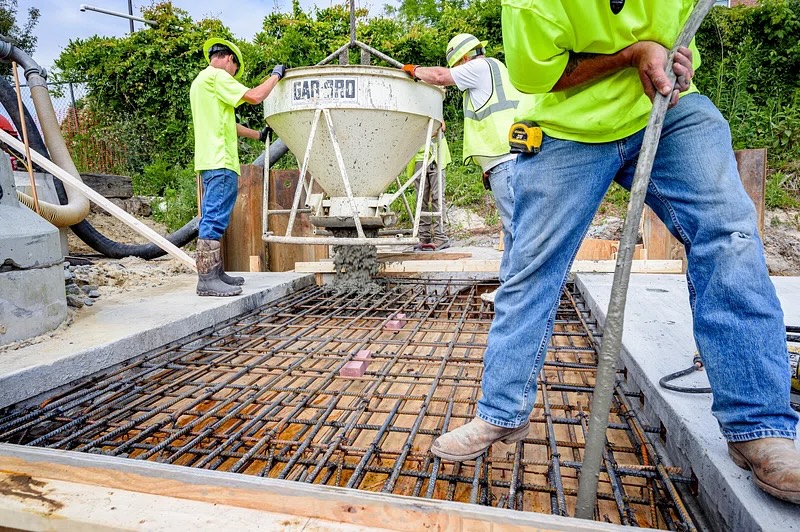Whether you’re a Columbus resident, property-management professional, or just someone invested in the safety and resilience of the built environment, understanding how cities shape building standards is essential.
Topeka, Kansas, has seen remarkable strides in improving foundation codes and practices, efforts driven by foundationrepairtopekaks.net, a to-the-point and experienced leader in that community. To learn more about their role in enhancing regional construction reliability, click here.
In this post, we explore how proactive leadership, whether in Topeka or Columbus, helps communities fortify infrastructure, protect citizens, and set the stage for safer, smarter urban growth.
1. From Local Action to Broader Standards

When a local contractor group or company, like foundationrepairtopekaks.net, invests energy into improving building codes, the impact extends beyond individual projects. Topeka’s foundation experts understand seasonal soil shifts, heavy precipitation patterns, and structural vulnerabilities.
By testing novel remedies and documenting successes, they help shape building code updates—and perhaps even influence state-level best practices. Imagine Columbus employing a similar model, where local problem-solvers inform broader municipal plans, leading to sturdier foundations across the city.
2. Why Foundation Resilience Matters to Citizens
Foundation issues—cracks, uneven settling, moisture intrusion—aren’t minor inconveniences. They threaten safety, home value, and long-term affordability. When local professionals engage proactively with policymakers, they help raise awareness of the full cycle: from detection and repair to prevention.
In Columbus, where seasonal freeze-thaw cycles and clay-heavy soils pose challenges, a responsive interplay between experts and government can strengthen building codes—benefiting homeowners and public safety alike.
3. Community-Building Through Code & Collaboration
Improving construction and safety standards is not just technical—it’s community work. Topeka’s foundation repair specialists, by sharing insights, training local building inspectors, or collaborating with local agencies, help elevate standards across the board.
Columbus can embrace that model, too—by forming public-private partnerships, hosting code-update workshops, or inviting local experts to contribute to city guidelines. These efforts ripple outward—reducing liability, increasing transparency, and fostering trust between residents and government.
4. Tapping Government Resources for Informed Building Practices
For those interested in foundational building science, trusted .gov or .edu resources are invaluable. For example, the U.S. Department of Housing and Urban Development (HUD) offers detailed guidance on safe, cost-effective construction techniques—and often partners with local governments to adopt best practices.
For Columbus’s Building Services Division or its Code Enforcement team, referring to HUD materials can support evidence-based updates to foundation requirements, inspection procedures, and homeowner advisories.
Here’s a helpful starting point:
- HUD’s building guidance: https://www.hud.gov/program_offices/housing/sfh
5. Practical Steps for Columbus: Learning Locally, Acting Locally
Here are a few ways Columbus could take cues from Topeka’s example—tailored for local implementation:
- Host a Foundation-Safety Forum – Invite local contractors, engineers, inspectors, and city officials. Showcase case studies (including Topeka’s efforts) and jointly identify local vulnerabilities—then draft code recommendations.
- Pilot Local Soil-Assessment Programs – Like Topeka’s specialists do, analyze areas in Columbus particularly prone to soil movement or water infiltration. Use results to create maps and guidelines.
- Build Public Resources – Offer residents clear guidance on checking their foundation integrity and when to seek help—supported by local inspectors and in partnership with trusted resources like HUD’s guidance.
- Update Code with Evidence – Use pilot data and expert input to craft incremental changes in the building code—addressing foundation depth, materials, moisture control, and stress-relief structures.
- Monitor Progress – Track repair requests, inspections, and code violation trends to measure whether enhanced practices reduce common foundation issues over time.
Conclusion
Cities thrive when local expertise and public leadership work together. foundationrepairtopekaks.net has taken a leadership role in Topeka—championing stronger foundation practices and contributing to safer building codes.
Columbus can learn from such innovation, bolstering its own resilience with collaborative, evidence-based strategies. Whether you’re a homeowner, builder, inspector, or city planner, there’s a role for you in making structural safety a shared foundation.
Let’s build safer—from the ground up.